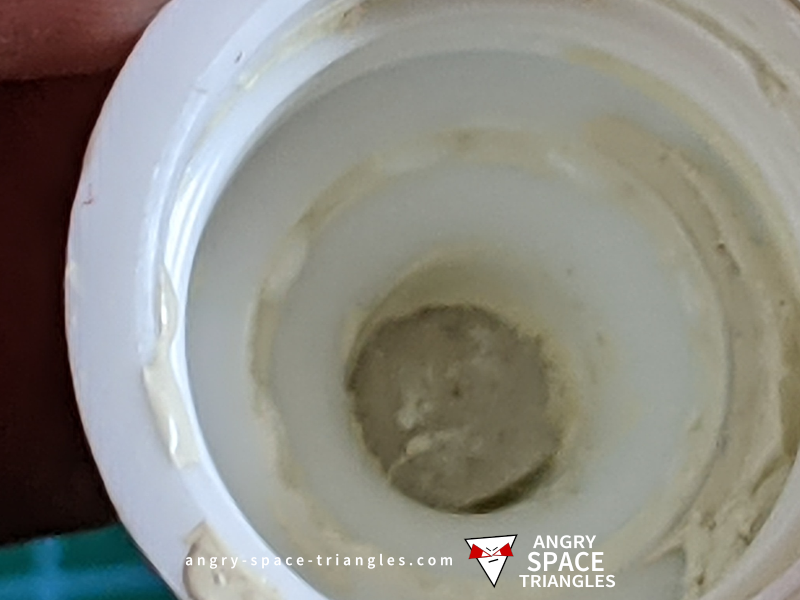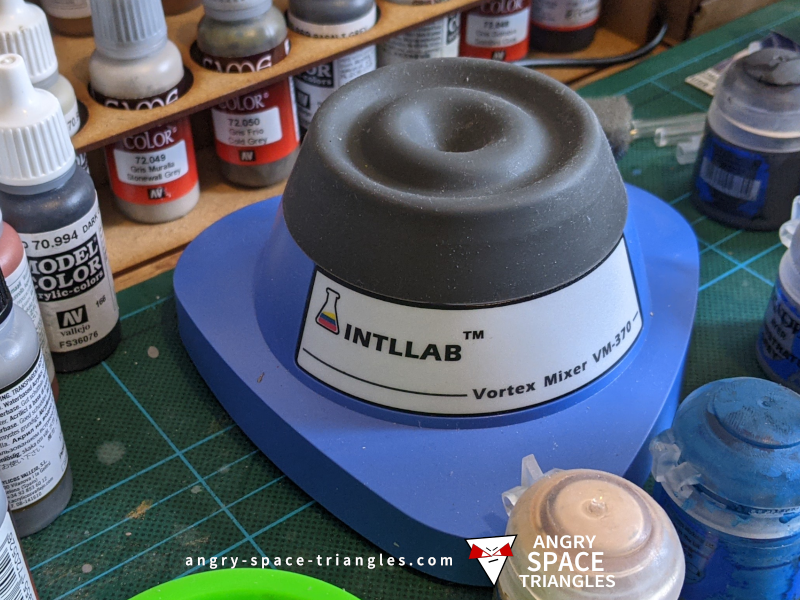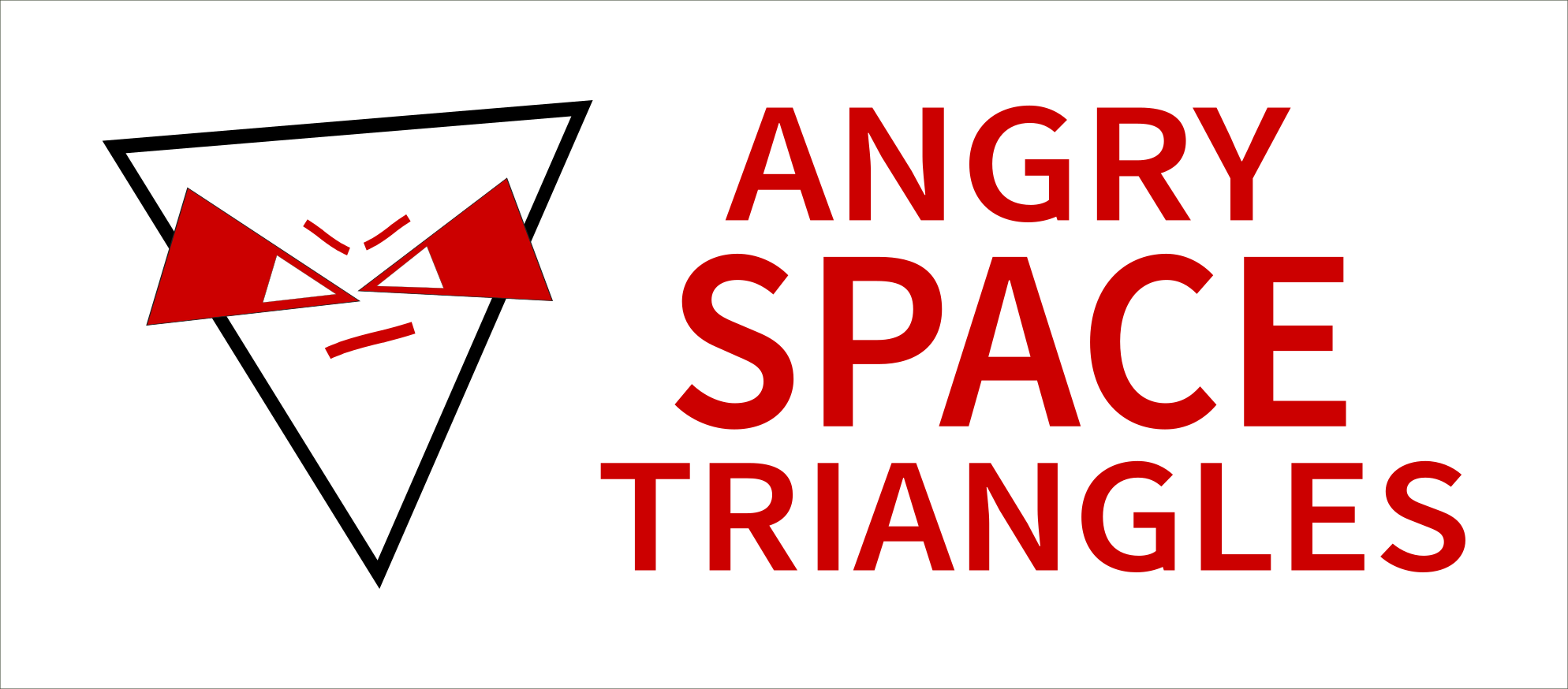
Fed up with Games Workshop paint pots!
Update 2024
Jump to my updated thoughts ditching GW paints, having been using primarily Vallejo paints for ~3 years.
Introduction
For a while, I’ve had just a single Vallejo paint – Ivory. It’s great. It’s a thick very opaque paint and has good coverage. I’ve been using GW paints all my life: when I were a lad, they were the only paints that I knew about ( you know, before the internet). Since I’ve started painting again I’ve realised that there are loads more brands out there to try.
This post covers my approach to switching over from Games Workshop Citadel paints to Vallejo paints (a mix of both Game Color and Model Color ranges)
This post may seem to be totally Games Workshop bashing, (and it is when it comes to their stupid paint pots), but don’t get me wrong – Games Workshop paint is good. I just hate the pots…
I Hate Citadel Paint Pots!
The catalyst for making the change was simply that I hate the Games Workshop paint pots. Since I’ve been using the odd dropper bottle I’ve realised just how much better the dropper bottles are.
My beef with the Citadel pots is as follows:
They are expensive (for just 12ml)
For the layer and base paints, Games Workshop pots contain 12ml of paint; this compares poorly versus the 17ml bottles that The Army Painter Vallejo and many other brands have.
Dried paint – careful use required
Paint gets dried around the rim of the pots as you take paint out of them, and it slowly builds up around the to edge, around the pot insides, and it dries in the rim of the pot lids.
No matter how careful you use you paints – this will happen. If you are no especially careful at taking out paint, this dried paint will accumulate more quickly,
In short – I don’t want to have to be careful when getting at the paint. It slows you down and wears on my patience (which is a precious and finite resource!)
Dried paint – pots degrade over time
The biggest problem with the dried paint is that pots become more difficult to close, eventually not closing properly. This accelerates your paints drying out.
By comparison, basically all the Vallejo paints I’ve had second hand have been in good condition.
Note that this is a particular problem with buying second hand Games Workshop paint – older paints are often not in good condition, with some paints being especially bad for it (Corax White – I’m looking at you.)
Dried paint – a right bugger to clean
You’ll find yourself pulling off strips of dried paint from around the rims. Although I find this strangely satisfying – it makes a mess. Dried paint may chip off into your paint, and collect in your paint lids.
Cleaning paint out of the rim of the lids is dangerous. I’ve nearly stabbed myself many times with a screwdriver or file or whatever pointy thing I have to hand that I’m trying to use to gouge out the dried paint from the lid. (Thinking about it, this was another catalyst that drove me to make the change).
Dried paint – a waste of paint
When you look at older paint pots with lots of dried paint you realise just how much of your 12ml is wasted! Compounding this, if a pot accidently gets dried out because it didn’t close properly, then all the paint can be totally ruined.
Dried paint – bits!
If you are not careful you’ll find that paint bits get on your brush and on your models. A minor gripe, but a gripe none-the-less.
My painting desk collects lots of tiny bits of dried paint – I’m hoping that this problem is greatly reduced after spending some time with using almost exclusively Vallejo paints.
Bigger spillage risks
Sometimes I am clumsy. I have bad days. On those days, I knock stuff over, bump into stuff and drop stuff.
If I knock over an open dropper bottle (which is more likely given they have a higher centre of gravity than a 12ml GW pot) they I am likely to spill a little paint..
If I knock over an open Games Workshop pot then, well, it’s a major disaster with paint everywhere. The 24ml wash pots are the worst – they are so much more fluid that regular paint.
Slow to use
My last problem with Citadel paint pots is that they are slow to use vs a dropper bottle. With dropper bottles it’s super quick to get paint from them: – take the top off, a little squeeze, and put the top back. Done.
Having to use something like a paint brush to extract paint from GW pots means that you then need to clean the paint off that thing, wasting yet more time and paint.

Foam, glue and a hole punch

Foam pads ready for gluing

A foam circle glued into a dropper cap
Droppers are Not Perfect (apparently)
OK, so dropper bottles are not perfect. I’ve not yet encountered this, but word on the street is that they can still get gummed up with dried paint since the seal between the cap and bottle is not always that great.
Problem mitigation – Vallejo
To head off any problems with my new Vallejo dropper bottles I spent an hour or so adding small foam pads to the inside of the dropper caps. I punched the foam pads out of 2mm crafting foam using a paper hole punch, and glued them in with some UHU glue.
This wasn’t the best glue to use, as it turned out. Apart from being a bit messy, I’ve since found some of the pads didn’t stick (or where more just more attracted to the stickiness of the paint from the droppers). No matter, as I encounter the odd loose pad I just affix it again with a spot of super glue, using some tweezers to lower the pad into the top of the cap.
Problem mitigation – Games workshop
By comparison, the fix for GW paint pots is to transfer them to dropper bottles! This is painfully slow to do, is messy, wastes loads of paint and typically requires you to dilute your paint so that it flows adequately to do a transfer. I don’t want to dilute my paints uncessarily.
Not a Complete Switch
I am not abandoning Games Workshop paints completely. I don’t have much experience with the Vallejo paints; I don’t know if I have the right ones to cover what I need, so I’m running the sets side-by-side for a while.
Furthermore, I intend to keep a variety of GW paints – the ones that I consider are are my “go to” paints.
Some examples of these are:
- Flesh tones (Bugman’s Glow, Cadian Fleshtone, Kislev Flash)
- Red Scar
- XV-88
- Dawnstone (for vehicles)
- All the washes
- The metallic ones (although I will try the Vallejo metallic paints that I have, where possible)

A vortex mixer
Mixing Vallejo Paints
After watching this video from Luke at Geek Gaming Scenics, I decided to invest in a vortex mixer since he recommended one for a good price. Note, I ordered it and it came with a UK plug without having to check or ask, so I guess the supplier uses their common sense. I think it cost like £35 in total, a bit more than advertised but still pretty cheap. Link in his video description.
One of the things that I’ll report back back on is how easily Vallejo paints mix when compared to Games Workshop.
The Vallejo Paints – My Initial Thoughts and Feelings
OK so I’ve been using the Vallejo paints for a couple of weeks, intermingled with some GW paints.
My initial feelings are that the paints are very good – both the Model Colour and Game Colour range. I can’t really differentiate between them in terms of their ease of use and effectiveness – both seem great.
I’ve not encountered any dried up Vallejo paints (even though they are mainly a second hand set). Nor have I encountered any leaking paints where I’ve added the pads to the lids.
Harder to mix?
A few paints have been harder to mix. Upon first use when you get the paint out, the paint is separated and requires a mix on the pallet. There is a danger here that the resultant paint isn’t the right colour or consistency.
I suspect that the paint mixture in the spout of the dropper is just harder to mix compared to the paint in the bottle. A good shake and the vortex mixer work fine on the paint in the bottle, but if the paint in the thin spout doesn’t move, it won’t mix.I had this problem with AP paints where they put medium at the top of all their bottles (apparently).
The jury is still out here. I suspect once I’ve used the paints a few times and have removed the initial paint from the spout, all will be good.
Update for 2024
The TLDR is that I love Vallejo paints and don’t know why people stick with Citadel Games Workshop paints.
New Issue with Games Workshop Paints
It is my opinion that Games Workshop design their paints with a short shelf life.
- All my Vallejo paints are fine even if they haven’t used in ages
- Any and all Vallejo paints i’ve ever bought (new or 2nd hand) have been fine after a good shake
- I budget for 15% of all second-hand Games Workshop paints that I buy to be LUMPY. You can’t recover lumpy paint – just like when a sauce goes lumpy when cooking.
- This poor quality issue seems to apply to most light coloured paints – whites being especially rubbish
(Note that I occassionally buy-and-sell second hand paints – this is how i’ve discovered this issue).
I have my opinion that this issue is by design because:
- GW only cares about making as much money as possible like ALL BRITISH PLCs
- I’ve never experienced this issue with other brands
